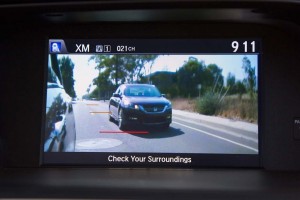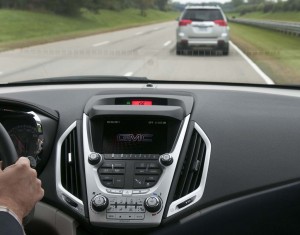If you’ve bought a new car during the last several years, chances are it is equipped with any number of advanced safety systems, such as blind-spot monitoring to forward collision warning, perhaps even technology capable of letting you do a limited amount of hands-free driving.
The odds also suggest you don’t fully understand how those advanced driver assistance systems actually work and may be making some potentially dangerous mistakes, according to a new study by the AAA Foundation for Traffic Safety.
“A substantial proportion of respondents demonstrated what we believe was a concerning lack of awareness of some of the key limitations of the technologies,” said AAA senior researcher Brian Tefft.
Two years after purchasing a new Cadillac CT6 sedan, one Detroit physician, asking not to be identified by name, told TheDetroitBureau.com that “I haven’t even bothered to try everything” built into the sedan, such as the active cruise control that is capable of maintaining a safe distance from the vehicle ahead as traffic speeds change.
(Better headlights could save pedestrians’ lives. Click Here for the story.)
While some drivers simply don’t use technology they don’t understand, others may be using it incorrectly, depending upon systems like lane departure warning or emergency auto braking to do things they weren’t designed to handle.

Blind spot monitoring systems may use cameras in the sideview mirror to display an image of what's out of sight but they still have limitations.
That became readily apparent after Tesla first released its semi-autonomous Autopilot system in October 2014. YouTube was quickly filled with videos showing owners doing things like activating Autopilot and then climbing into the back seat. But one driver, a former Navy SEAL, was killed on a Florida highway in 2016 when the system failed to recognize a truck had turned into the Model S sedan’s path. Another was killed last March when his Model X slammed into a highway barrier. In both cases, the drivers failed to retake control, even when an alarm sounded.
“I think there’s a general assumption among members of the public that technologies in vehicles today will do things for us” they’re not designed to handle, said Jake Nelson, director of traffic safety advocacy and research for AAA.
Part of the problem, according to the AAA study, is that only half of the owners it surveyed were offered any training meant to familiarize them with their safety and driver assistance technologies. When offered training, however, 90% took the time to learn.
(Click Here for more about rising new vehicle insurance costs.)
The study revealed several potential trouble spots:
- Almost 80% of the motorists with vehicles that included blind-spot monitoring didn’t understand the system’s limitations, especially in terms of fast-approaching vehicle, as well as pedestrians and bicyclists;
- Four out of 10 drivers didn’t know the difference between forward collision warning and automatic emergency braking systems – a problem perhaps exacerbated by the fact that automakers may offer both systems as options on the same product.
- Almost 30% of those surveyed who use active cruise control appeared to think of it as being able to operate the vehicle semi-autonomously, at least occasionally “engaging in other activities,” such as checking smartphones.
The lack of awareness and understanding could defeat the benefits presented by advanced driver assistance and other digital safety technologies. The Insurance Institute for Highway Safety has found that when used properly, systems like blind-spot detection and lane departure warning can yield significant reductions in highway crashes. But a separate IIHS study also found that if drivers use them improperly there can be catastrophic results.
“If the systems seem too capable, then drivers may not give them the attention required to use them safely,” said IIHS chief researcher David Zuby.
That was the case, apparently, when a prototype autonomous vehicle operated by Uber struck and killed a pedestrian in Tempe, Arizona, last March. The back-up driver was watching a video on a smartphone, according to local police, and didn’t retake control when the Volvo SUV’s self-driving technology failed to identify the pedestrian.
(To see why advanced driver assistance systems could raise, not cut insurance costs, Click Here.)
Experts warn that as more of these technologies are added to new models there could be more trouble ahead. Used properly, even more lives could be saved, according to IIHS and AAA, but when drivers either ignore or are unaware of the limits of these features they could face deadly results.


